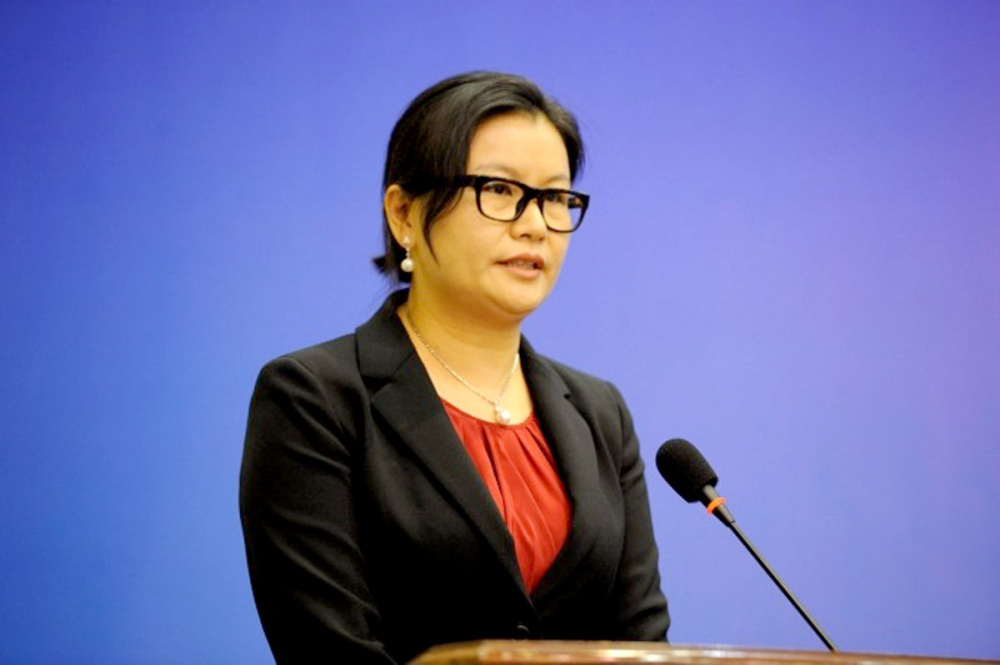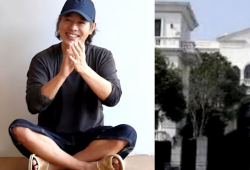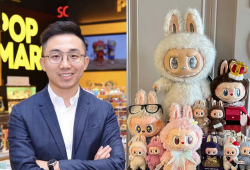
Foreign Property News | Posted by Hnin Ei Khin
Chinese billionaire Zhou Qunfei, nicknamed the “touchscreen queen” for founding cover glass producer Lens Technology, began as a migrant factory worker from a tiny village and rose to build a US$13.3 billion fortune, becoming one of the world’s richest self-made women.
Zhou holds a 62% stake in the China-based manufacturer, which accounts for most of her fortune. She shares this stake with her husband, Bloomberg reported, citing the firm’s 2024 interim report.
Lens Technology, which produces a wide range of lens and cover glass products, including touchscreens for Apple and Samsung devices, is listed on the Shenzhen Stock Exchange with a market cap of around 104.3 billion yuan (US$14.4 billion), according to its website. It reported revenues of 69.9 billion yuan for 2024.
The firm pushed Zhou to the top of the list of the world’s richest self-made women in 2015, and she remains among their ranks today.
.jpg)
(Zhou Qunfei, Chairwoman of Lens Technology, delivers a speech during an event to celebrate the International Women's Day in Changsha city, central China's Hunan province, March 7, 2015. Photo by Imaginechina via AFP)
Her climb to the top reflects a classic rags-to-riches story. As the youngest of three children, Zhou grew up in a small farming village in central China’s Hunan Province.
Her mother passed away when she was just five years old while her father lost a finger and most of his sight in an industrial accident. She had to raise pigs and ducks to support her family but still excelled in school.
"In the village where I grew up, a lot of girls didn’t have a choice of whether to go to middle school. They would get engaged or married and spend their entire life in that village," Zhou recalled in an interview with the New York Times, adding that she chose a different path.
She dropped out of high school at 16 and moved to Shenzhen in southern China in 1986, where she worked in a watch lens factory, earning only $1 per day. The factory’s grueling hours were demanding, with Zhou working from 8 a.m. until midnight, and sometimes until 2 a.m.
In 1993, Zhou and a few relatives started a watch lens workshop out of a three-bedroom apartment in Shenzhen that doubled as their living space. The business was founded using HK$20,000 (US$2,570) that Zhou had saved up.
Over the next decade, Zhou steadily expanded her operation into a full-fledged factory producing watch lenses with 1,000 workers.
However, the firm did not take off until a bold pivot into mobile phone glass, sparked by a surprise call from Motorola executives in 2003. The company was looking for a partner to develop a glass screen for its new product, the Razr V3.
Zhou accepted the offer.
"A business rival was jealous," Zhou recounted to CNBC. "That company teamed up with the raw material supplier and tried to squeeze me out of the game."
The supplier then demanded full payment upfront before delivering anything, a deviation from industry norms.
With limited finances, Zhou scrambled to meet the supplier’s demands to ensure that the deal with Motorola would go through. She went as far as selling her home and other valuables, but even that was not enough.
Pushed to her limits, Zhou admitted she felt overwhelmed and once considered jumping off a train platform, but a call from her daughter jolted her back and reminded her of her responsibilities to her family and employees.
She reached out to Motorola with a plea for help and, with that support, moved past the crisis.
Then in 2007, a new chapter opened. Apple introduced the iPhone with a glass touchscreen, and Zhou’s company was chosen as a supplier. The partnership thrust Lens Technology into the spotlight.
Lens Technology went public in 2015, 22 years after it started as a family-run workshop, and turned Zhou into the richest self-made female billionaires globally at the time with a $10.2 billion fortune, as named by Forbes.
Ref: From migrant factory worker to one of world’s richest self-made women billionaires: The story of ‘touchscreen queen’ Zhou Qunfei Photo Credit- Imaginechina via AFP









